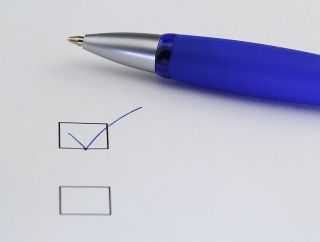Emotional Abuse
Use a Coercive-Abuse Checklist to See Reality
Validation can occur when we "see" the coercive behaviors we've experienced.
Posted September 15, 2024 Reviewed by Gary Drevitch
Key points
- Coercive abuse in intimate relationships can be missed by the targeted person or those who could help.
- A "coercive abuse checklist" enables someone to see the harmful behaviors they endure.
- Recognizing abuse is the critical first step to seek help and begin to heal.

In an intimate relationship, the harmful effects of coercive abuse can often be missed by those enduring—it as well as their therapists. Unlike physical violence which is criminalized with laws and protective measures, non-physical abuse is easily overlooked unless you specifically search for it. Completing a “coercive abuse checklist” can enable someone to see the harmful coercion embedded in behaviors used by their partner. Recognizing that abuse is taking place is the first critical step towards healing and selecting the right help.
The Coercive Behavior Checklist
After decades of clinical work within the realm of coercive abuse in intimate relationships, I’m surprised that the same condition of denying and minimizing accompanies virtually every client with a controlling partner. It’s testimony to the difficulty recognizing abuse when it’s not physical—and the psychological impact of abuse that gets in the way of owning the experience.
In my work with individuals with coercive partners, there is often deep confusion, self-blame, loss of trust in one’s judgment, and trauma symptoms. Too often it comes to my attention that years of clinical help failed to help an individual or couple. Also, if medication has been prescribed for anxiety or depression, it often only prolongs the bearing of the abuse. What is the best way to get clear or help a client become aware about what they could be experiencing in their relationship is a coercive-abuse checklist.
In my clinical practice, I use a “Controlling Behavior Checklist” that I acquired during a domestic violence training in 1982. Although we have moved from criminalizing domestic violence to now taking seriously the harm of non-physical abuse often identified as coercive control, coercive abuse, narcissistic abuse, gaslighting, etc., the harmful tactics or behaviors haven’t changed. For decades, this checklist has helped hundreds of clients self-identify their abusive experience. Often, clients are surprised by the amount of checks they see, indicating the pervasiveness of coercion they endure. Bringing a history of abuse into awareness can be painful, yet it’s a chance to begin a healing journey and take back control of one’s life.
I can’t stress enough the value of using a checklist. It’s a profound way to quickly identify the problem. There are many available online if you search “controlling behavior checklist," but I'm providing below the one I use. It’s informative about psychological abuse, physical violence, and sexual abuse. You can use it yourself to identify coercive behaviors you might be experiencing from a partner. As a friend or family member, you can offer it to a person who you suspect might be enduring abuse—or give it to a young person starting to date, or in a relationship. (If you're a clinician, use it in your practice.) These coercive behaviors are serious red flags, and we also know that psychological abuse can be a precursor to physical violence.
Controlling Behavior Checklist
Psychological Abuse
______ Standing in the doorway during arguments/keeping you from leaving
______ Making angry or threatening gestures
______ Giving you the menacing "look"
______ Using body or size to intimidate you
______ Standing over you
______ Shouting you down, exploding, yelling, or screaming
______ Driving recklessly to scare you
______ Threats of all kinds, including taking the children away
______ The silent treatment: not speaking or acknowledging you
______ Harassment/seeking you out to annoy you
______ Stalking you in your home
______ Using crude language, calling you names
_____ Ridiculing your traits, putting you down
______ Criticizing your behavior
______ Blaming you/false accusations
______ Pressure tactics, rushing you into decisions
______ Making you feel guilty
______ Manipulating the children
______ Using your children to coerce you
______ Interrupting, changing topics, not listening, not responding
______ Lying, twisting your words, withholding information: gaslighting
______ Claiming to be the authority, knowing “the truth”
______ Controlling your money or all of the financial decisions
______ Isolating you from family, friends, or neighbors
______ Preventing you from working outside the home
______ Sabotaging your job and activities outside your home
______ Turning family, children, or friends against you
______ Jealousy, emotional withholding
______ Affairs, infidelity
______ Calling you constantly to check up on you
______ Isolating you/making you a prisoner in your own home
______ Threatening suicide
______ Threatening to kill you
______ Threatening abandonment if you don’t do what they want
______ Keeping you up at night with tirades, interfering with your sleep
______ Preventing you from seeking help: medical attention, psychotherapy, etc.
Physical Violence
______ Slapping with an open hand
______ Punching with a fist
______ Beating
______ Biting
______ Kicking
______ Dragging
______ Poking
______ Grabbing/yanking arm
______ Twisting an arm, squeezing a hand
______ Choking, strangling
______ Pushing, restraining
______ Pinching
______ Pulling [hair]
______ Physically throwing you
______ Physical restraints: holding you down, pinning you against a wall
______ Throwing objects around
______ Throwing objects at you
______ Spitting on you
______ Abuse of furniture, home, your personal possessions
______ Abuse of pets
______ Keeping weapons around that threaten you
______ Using weapons or objects that threaten you
Sexual Abuse
______ Jokes against women/men, objectifying and devaluing you
______ Degrading you sexually, making you feel ashamed
______ Using threats or coercion to have sex with you or to have sex you don’t like
______ Waking up to find your partner having or attempting sex with you
______ Rape (forcing sexual acts against your will)
(From DV training in 1982 at REACH—previously The Committee for Battered Women.)
Awareness of coercive abuse from an intimate partner is critical and cannot be ignored. With knowledge from a coercive-abuse checklist, you can seek out informed help and support.
©Lambert.




